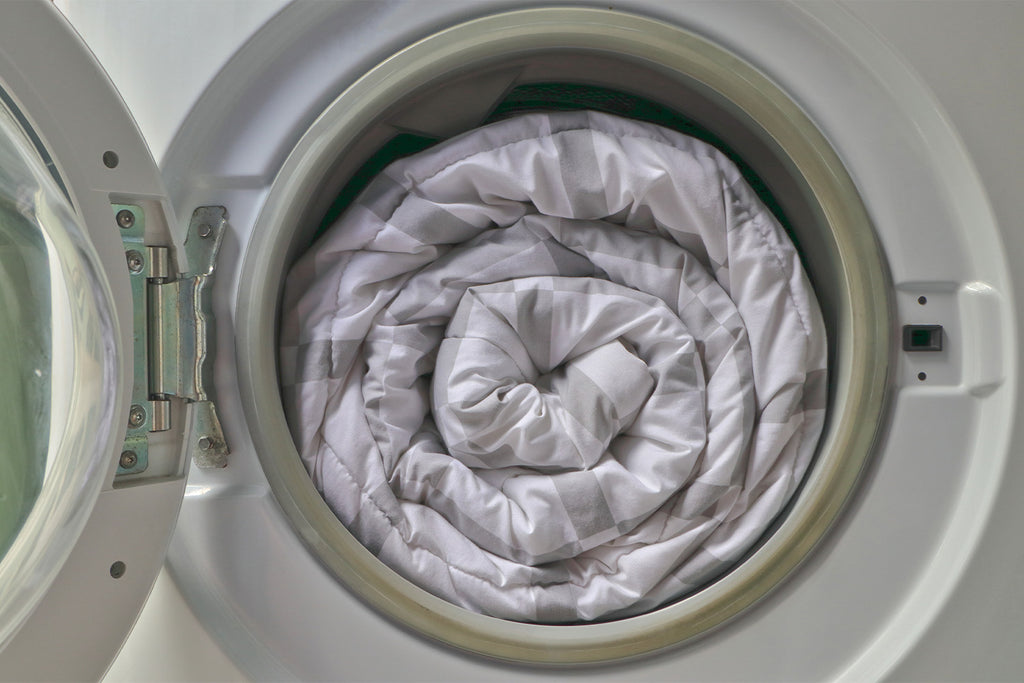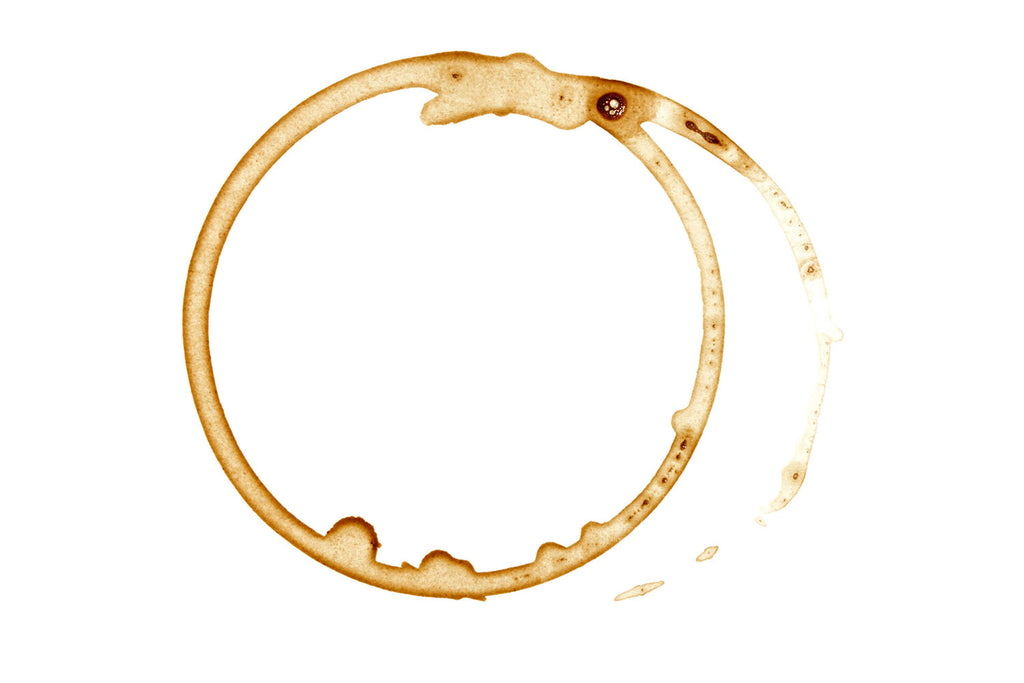
How To Wash a Comforter

We all (hopefully) wash our bed sheets on a regular basis. We sleep on them every single night for hours on end, so these things need to be nice and clean to keep our skin healthy and to keep the bacteria away.
Still, even people who are diligent about cleaning their sheets might not be as on top of their comforter-washing game. Maybe it’s because you don’t know that it needs to be washed, or maybe you just don’t know how.
So today, we’re going to talk about how you can clean your comforter. This important piece of your bedding needs cleaning too, and by the end of this article, you’ll be one step closer to cleanliness and godliness.
Do You Really Need To Wash Your Comforter?
The short answer is, “Absolutely!” Washing your comforter is an incredibly important part of keeping your bedding clean, and a clean bed is a super important part of staying healthy.
Here’s the gist. Most of us know that our bodies shed a ton of skin every day, but not everybody knows that, on a daily basis, each person sheds about 500 million dead skin cells on top of a ton of body oils. That is a lot of gross stuff. Since we spend about a third of the day in bed, around 166 million of those cells end up in our sheets, pillows, mattress, and comforter.
That’s a pretty chilling thought on its own, but it’s nothing when you find out that your dead skin cells are like an all-you-can-eat buffet for all different types of bacteria and even these little critters called dust mites.
Dust mites are tiny organisms that are too small to be seen by the naked eye. They live in the dust and love to snack on the skin that comes off your body. On top of that, they like dark, cool areas, so your bed is the perfect place for them to want to congregate.
With all of that in mind, it’s no wonder that you ought to be washing your sheets every week, but you also need to be washing that comforter. It isn’t exempt from getting dirty.
Your Health
Sleeping in dirt and grime is going to be bad news for just about anybody. Not only can it clog your pores and be bad for your skin, but all that bacteria could put you at a higher risk of getting sick or getting an infection.
On top of all that, if you have allergies or asthma, you especially need to make sure your bedding is clean all the time. Approximately 20 million Americans are allergic to dust mites themselves, making it a big allergy issue.
Dust mites, in and of themselves, are basically harmless, but if you’re allergic to them or have asthma, they can affect your health in several different ways. The proteins from dust mite droppings and dead dust mites themselves can cause inflammation, wheezing, chest pain, and difficulty breathing.
For these people, keeping your bedding clean is an absolute must.
How Do I Wash My Comforter?
Now that you know the importance of keeping your comforter and all your bedding clean, let’s walk through a step-by-step process of how to wash your comforter.
1. Remove the Duvet
Lots of people like to cover their comforter with a duvet cover. These helpful tools can protect your comforter, make it more comfortable, and make it more stylish. They can also make it so that you don’t have to clean your comforter as often.
Duvet covers and comforters without duvets should be washed about every two weeks, but if you do have a duvet cover on your comforter, you can get away with washing your comforter two or three times per year.
Once you’ve got your duvet removed, wash that on its own. Check the label and follow the manufacturer's instructions on cleaning. Usually, you can likely run the duvet through a simple wash and dry cycle and be good to go.
2. Check for Stains
Once your duvet is off and cleaned, it’s time to check your comforter for stains. If you see any stains, grab an enzyme-based stain remover, spray some on the stain and scrub it with a small brush.
Let the stain remover sit on the stain for about ten minutes, and then come back and blot the stain with a damp cloth. If the stain is still there, repeat the process.
3. Throw It in the Wash
Now it’s time to wash your comforter. Make sure you pay attention to what type of comforter you have so you know how best to clean it.
Many comforters can go in the washing machine just fine; they just need to be washed on a gentle cycle with a standard laundry detergent. Also, make sure that your washing machine is big enough to fit your comforter. Otherwise, you’ll have to go to a laundromat with a large-capacity machine.
If you have a down comforter, you might be in a bit of a pickle. Top-loading washing machines could damage down comforters, in which case you would also want to take it to a laundromat with a front-loading machine. Down comforters also require a special detergent, so make sure you use the right one.
In any case, be careful when you’re putting the comforter in the wash so that it’s not twisted up or folded over. Make sure it’s spread evenly throughout the machine for an even, balanced load.
No matter what, check the label on your comforter for the manufacturer's recommendation on how to clean it. Improper cleaning could damage the comforter.
4. Dry Your Comforter
Drying your comforter needs to be done thoroughly, so pay attention during this step. If your comforter doesn’t get dry, it can get smelly, clumpy, and even mildewy really quickly, undoing all your hard work.
Pretty much all comforters can go in the dryer. Just make sure that you use a low heat setting, as high heat will damage down and some other comforters. If it doesn’t get all the way dry, run it through another low-heat cycle until it’s completely dry. This could take a few hours.
If you want to speed up the process, take the comforter out of the dryer every 20 to 30 minutes and give it a good shake and fluff. This loosens clumps and gets air circulating through all the down fibers, which will speed up the drying process.
If you don’t have a dryer and need to hang dry your comforter, it’s best to do so on a warm and sunny day or at least make sure there’s plenty of airflow. Fans are your friends.
It’s best to avoid using dryer sheets, as those contain fabric softeners that leave a thin coat of oils on your comforter. Instead, use wool dryer balls. These will help to distribute the down evenly throughout the comforter and even help it (and all your other clothes) dry faster.
5. Replace the Duvet
Now all that’s left is to take your clean duvet cover and place it on your clean comforter. Once that’s done, you’re ready to put it on your bed and enjoy a fresh, clean, fluffy comforter.
Are There Any Alternatives?
If you don’t have the correct washing machine and you don’t want to head all the way to a laundromat to wash your comforter, you can always do it by hand. All you’ll need is a large bin (preferably a bathtub or very large sink) and some warm water.
To do this, spot-clean your comforter for stains like you would normally. Then fill your bathtub or large sink with warm water and a gentle, down-safe detergent and mix them together. Now put your comforter in the tub and gently press it into the water, massaging and agitating it with your hands. Don’t wring the comforter, or you’ll damage it.
Now let the comforter soak in the detergent and water for about 15 to 30 minutes. Once that’s done, drain the tub and press down the comforter to remove all the excess water. When the water’s all out, fill the tub up again with clean water and no detergent and repeat the process to ensure all the detergent is out of the comforter.
This method will take a bit more time. It’ll probably also take your comforter a lot longer to dry, but you’ll save a few bucks at the laundromat, and you won’t have to drive all the way there, so it may be worth it to you.
A Clean Comforter
Now you know how to clean your comforter so that you can support your health and have peace of mind when you’re asleep. Make sure that you clean it often so that your comforter lasts you a long time and you can keep getting those healthy z’s each night.
For more information about bedding and a great selection of sheets, comforters, mattress pads, and more, check out eLuxury.
Sources:
Allergy to Dust Mites | Allergy & Asthma Network
Comforter and Bedding Cleaning | Purdue University




